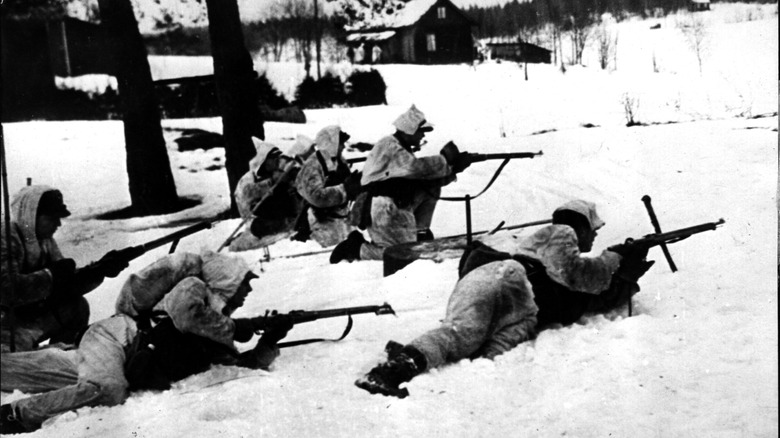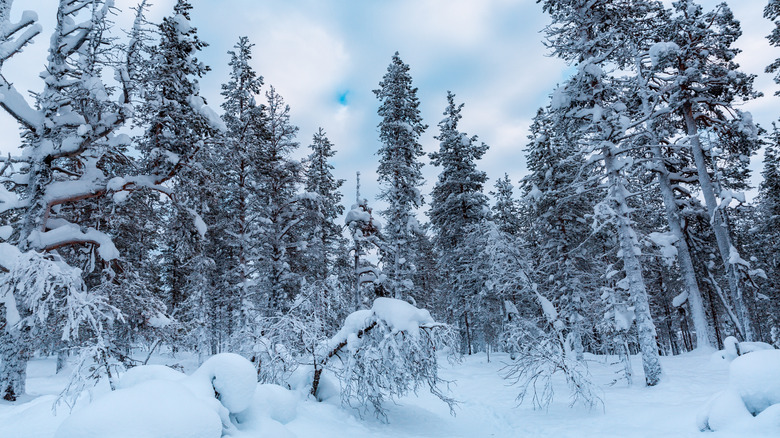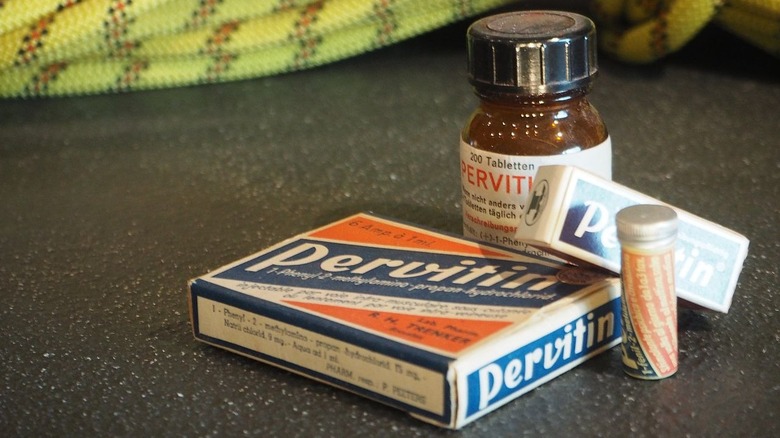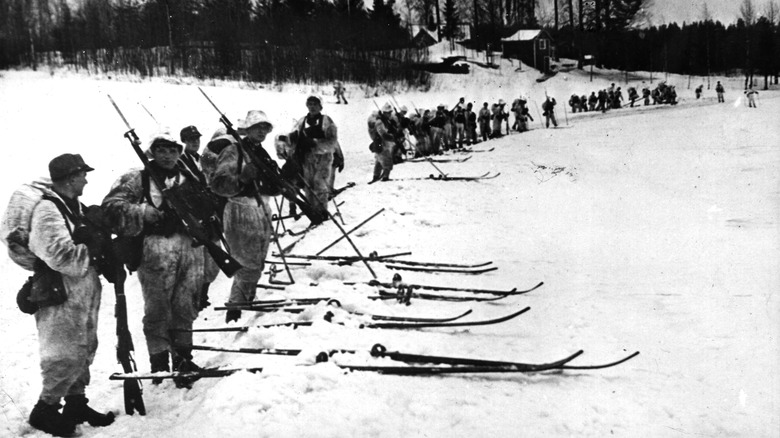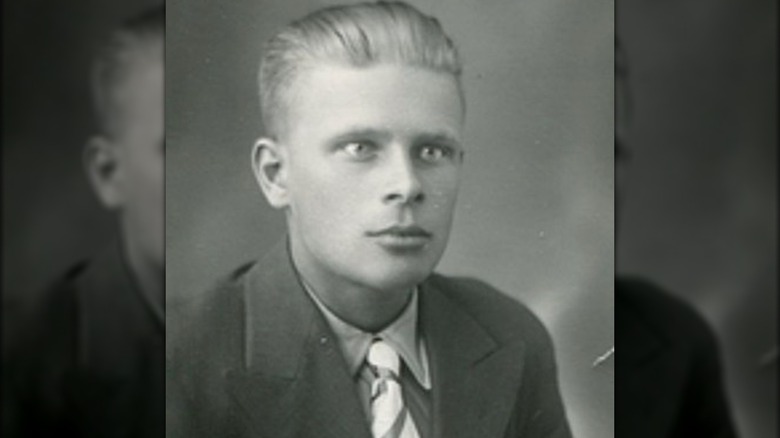The True Story Of A Finnish WWII Soldier That Lived For Weeks Alone In The Arctic Circle
Ah, Finland. A sauna in every home; Nightwish and a deep love of metal music; Moomin the informal national mascot; and of course, history's most tweaked-out ski trooper meets arctic winter survivalist warrior. Kiitos, land of a thousand lakes! ("Kiitos" means "thank you.")
On the surface, it sounds too absurd to be true, or at least anything but comical. A dude in World War II gets separated from his ski troupe because he's driven by the power of militarily-distributed meth, and pushes through minus 30-degree Celsius weather (minus 22 F) all by himself, blitzed out his mind, before making it back to camp weeks later after crossing 400 kilometers (250 miles) on foot in the wilderness and shrinking in body size to a mere 42 kilograms (94 pounds)? Oh, and did we mention he would go on to live a peaceful, healthy, everyday life till he passed away in 1989 at the age of 71? (via All That's Interesting and Snow Brains).
Believe it or not, all of that is 100% true. Aimo Koivunen, arguably the most resilient person in the history of ever, survived the winter of 1944 thanks to nothing but sheer will, survivalist knowledge, and a whole lot of drugs. At this point, it bears mentioning that if he hadn't survived, the story would be tragic rather than awe-inspiring and humorous. Also, because we're talking about World War II, deaths, Russian invasions, and the like: it's time to strap on your ski boots and get a little serious.
The ferocity of the Winter War
Finland and Russia haven't exactly had the most, shall we say, historically amicable relationship. Finland was used as a pawn, basically, in a game of back-and-forth land-swapping between the competing powers of Sweden and Novgorod (later absorbed into Russia) going all the way back to the Treaty of Nöteborg in 1323, as This is Finland explains. A full 500 years later, Finland was handed over to Russia wholesale vis-à-vis the Treaty of Hamina of 1809, which came at the end of yet another war between (you guessed it) Sweden and Russia. Finland was then granted governmental autonomy, dubbed Russia's "Grand Duchy of Finland," but by the early 20th century had had enough. In 1917 they declared independence. Russia let them go — war-free — but would be back a mere 25 years later.
Enter the "Winter War," a lesser-known excerpt from World War II that doesn't involve Hitler, A-bombs, or big, recognizable vignettes. After Germany invaded Poland in September 1939, Russia decided to take advantage of the situation by invading Finland in November. As the YouTube history channel "Kings and Generals" describes, Russia wanted to push to Helsinki in the dead of winter, and also block intervention from Norway by taking the Finnish coastal town of Petsamo in the north. But the Red Army wasn't prepared for Finnish ferocity, riflemen on skis, their tactical knowledge of Finland's forest-and-lake-filled terrain, or the nation's deep cold, which by March 1940, proved too much even for Russia.
Shots fired in the snow
By 1944, Finland had endured a roller coaster of invasions and shifting alliances. They'd beaten back the gigantic Red Army with their own severely undermanned military force but had lost some territory in the process. They wanted their land back and despised Russia so much that they made a temporary alliance with Nazi Germany to do so, as The Guardian explains. It would prove a reckless, self-harming move in the end. When Germany started losing the war, they fled Finland — particularly the northern area, Lapland — and burned its forests on the way out. At present, only one single village from the area remains intact from before World War II, as Finland, Naturally explains.
This is where our unlikely hero, Aimo Koivunen, joins the story. Koivunen was stationed up in Lapland with his ski patrol come March 1944, a mere month before Germany began their exit of Finland. Russia hadn't given up on its invasion, despite being repelled four years earlier. Shots rang out on March 18 around Koivunen's company, isolated and behind enemy lines. As Snow Brains explains, their only option was to flee, and it was up to Koivunen to carve a path through the snow for the other members of his troupe to follow.
By all accounts, Koivunen did his job, and only too well. Pushing through powder in Lapland's frozen winter was exhausting work, and he turned to Pervitin to give him a little chemical boost.
The Nazi's secret chemical weapon
Pervitin wasn't the kind of chemical weapon concocted in Soviet labs to murder millions en masse in gaseous form, like Doctor Death's gulag-fueled Laboratory No. 1 (a true, separate story, via Courier Mail). Pervitin was a pill, the "ideal war drug," in fact, aka "Pilot's Salt," aka "Tank Chocolate" (via The Atlantic). "Alertness aid," the little Pervitin bottle's 1940 packaging read, "to maintain wakefulness only from time to time!" Pervitin wasn't just an amphetamine — speed, uppers, pep pills, go pills, etc. — but an early version of what we now call crystal meth. And it was a "key part of the Nazi military strategy," as Time Magazine explains.
Between April and July of 1940, Germany manufactured 35 million three-milligram doses of Pervitin for distribution amongst its various armed forces. News spread to the UK about Germany's "miracle pill," but their own trials didn't exactly produce Captain Carter the super soldier from Marvel's "What If...?" series. Soldiers got a boost of energy, sure, but also got aggressive and lost their minds.
One former soldier turned post-war author, Heinrich Böll, described one pill producing the same energy as several cups of coffee. Another soldier and daily user, Otto F. Ranke, described Pervitin as allowing him to work from 36 to 50 hours without sleep. Due to the temporary alliance between Nazi Germany and Finland, some Pervitin must have changed hands and wound up in the packs of Finnish soldiers like Aimo Koivunen.
Overdosed, blown up, frozen and near death
When Aimo Koivunen reached into his pack and started popping Pervitin, the drug more than washed away his fatigue. As Snow Brains explains, he not only outstripped the pace of the Soviets giving chase, but he pulled ahead of his entire squad. The reason being, Koivunen didn't just take one, two, or even three pills, but — brace yourself — he took 30. He didn't die, his heart didn't give out, but he did eventually black out. Whenever he woke up, he realized he'd skied about 96 kilometers (60 miles) through the snow by himself. Still high, he had the wherewithal to realize that there was no recourse but to push on.
Koivunen, in fact, had taken so much Pervitin that he stayed high for days. In a delirious, semi-crazed state, he pushed through the snow on skis, avoided Soviet patrols, fell off a cliff, and then skied over a landmine that blew him to hell, burned his clothes off, and torched his leg (yes, seriously). He then, in a near-naked state in a subzero, snow-laden Finnish forest, found some pine cones, ate them for sustenance, then killed a jay bird and ate it raw before pressing on.
About 400 kilometers later (or 250 miles — about the distance from Los Angeles to Las Vegas) he reached Finnish territory. He weighed a deathly 42 kilograms (94 pounds), and his heart was racing at 200 beats a minute. But, he was alive, and would live another 45 years.
The Russo-Finish conflict comes to a close
Aimo Koivunen's drugged-up misadventure is bizarre in many ways beyond the obvious, and utterly ironic. He survived nearly two weeks in the wintry Finnish country while overdosed on amphetamines. He started his sojourn of suffering on March 18, less than two weeks after Finland declared war on its temporary allies, the Germans, as History explains. By the time he arrived to safety, with the help of German-made drugs, the Germans had started to flee. At the same time, the Russians, who had attacked Koivunen and against whom the Finns had recruited the Germans for help, wound up winning against Finland that same year, anyway. Via a 1944 armistice, Finland ceded the land it'd lost during its short-lived Winter War victory (via Britannica and This is Finland). In other words, what was the point of Koivunen's travail?
Maybe, as The Washington Post says of the Winter War itself, Koivunen's story represents a moral, if ultimately Pyrrhic, victory. His survival could be seen as representing the toughness and resolve of the Finnish people, as a whole; like modern-day Ukraine, they were the David who defied Goliath. And now? Finland is consistently ranked the happiest country on Earth according to The World Happiness Report, which says Finland, Iceland, and Scandinavian countries are all the happiest on Earth – NPR chalks up their contentment to realistic life expectations. But with a history that includes hundreds of years of oppression, warfare, and unintentional heroes like Koivunen, realistic may just be good enough.

